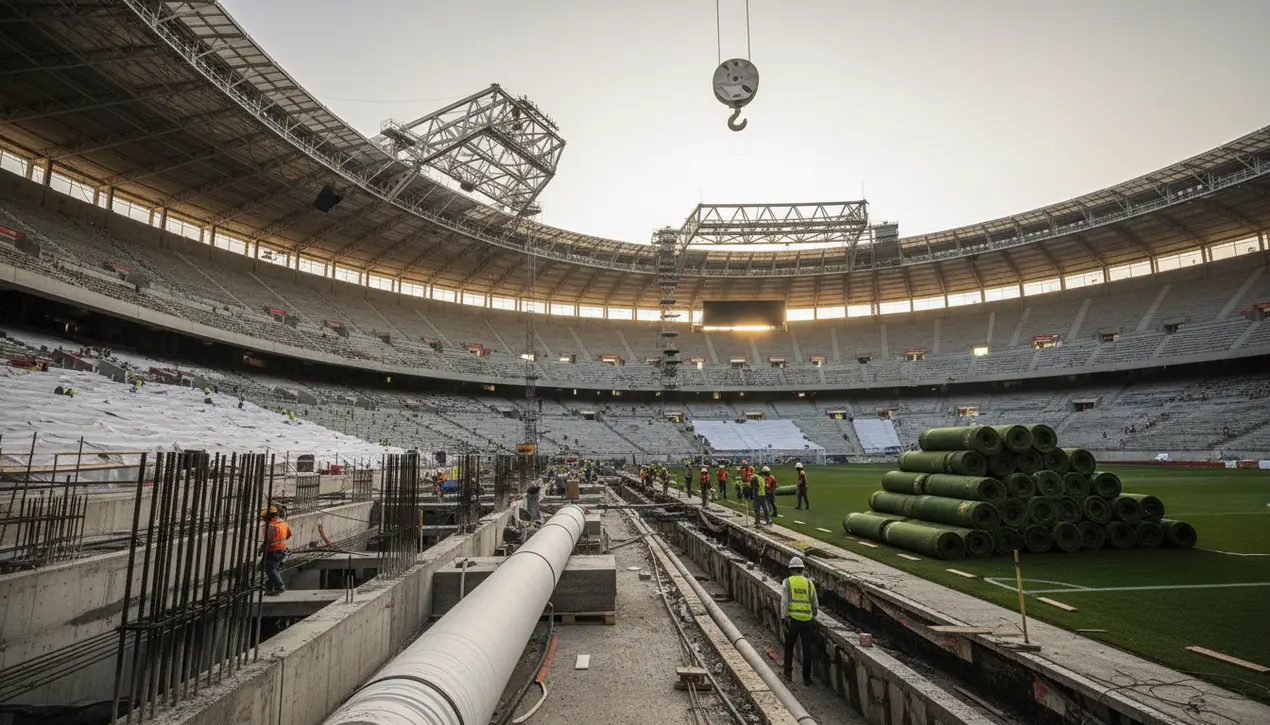
SportfootballFIFA World Cup
Azteca Stadium soul is being preserved in World Cup renovations, director says
JA
Jack Turner
2 days ago7 min read6 comments
When FIFA President Gianni Infantino first stepped onto the hallowed turf of Mexico City's Azteca Stadium over three years ago, he received a promise from the venue's custodian, media magnate Emilio Azcárraga Jean: the soul of this footballing cathedral would remain untouched by the coming renovations for the 2026 World Cup. Standing today amidst the symphony of construction, that vow is being honored with the meticulous care of a curator preserving a masterpiece.The iconic stadium, a titan of Latin American sport, is undergoing a profound yet respectful transformation, adding 4,000 potential seats to push capacity toward 87,000, installing a forest of over 340 speakers for a new sound system, and integrating massive video screens and state-of-the-art lighting. Yet, as official renderings confirm, the essential character—the intimidating, history-drenched bowl that has witnessed the gods of the game—remains defiantly intact.'It was very important to maintain its soul,' asserts stadium director Felix Aguirre, a sentiment that echoes through every decision. 'The soul is the essence of the stadium and it’s what we all come to enjoy.' This is not mere sentimentality; it is strategic preservation. The Azteca is not just concrete and steel; it is a living archive.It is the stage where Pelé, with an almost divine authority, lifted his third World Cup in 1970, cementing his status as O Rei. Sixteen years later, it was the canvas for Diego Maradona's flawed genius, hosting both the 'Hand of God' and the 'Goal of the Century' in a single, unforgettable quarter-final, a performance that still serves as the ultimate benchmark for individual brilliance, much like a young Lionel Messi's early displays for Barcelona.These are not just memories; they are the foundational pillars of the stadium's aura, a psychological advantage for El Tri and a daunting challenge for any visiting team. The renovations are a delicate balancing act between honoring this past and securing a viable future.The notoriously leaky roof is being sealed, a critical fix for Mexico City's torrential summer downpours. The hybrid pitch, a source of past embarrassment when a poor surface forced an NFL game to be relocated in 2018, is being reinstalled with a sophisticated new ventilation and drainage system designed to withstand the elements.The locker rooms, once peripheral, are being moved to the stadium's core and enlarged to accommodate the physical demands of modern athletes, particularly NFL teams, with the last such game hosted in 2022. Even the perpetually overwhelmed Wi-Fi, which crashed during sold-out spectacles, is getting a crucial upgrade, acknowledging that today's fan experience is as digital as it is physical.Funded in part by a sponsorship from Banorte, this revamp positions the Azteca to make history once more. Come June 11 next year, it will become the first stadium ever to host a World Cup opening match for a third time, a testament to its enduring status.It will stage five matches in total for the tournament co-hosted by the United States and Canada, including two playoff games. The planned reopening in March with a Mexico versus Portugal friendly, or potentially as early as February 28, marks the beginning of a new chapter.As Aguirre confidently states, the construction is on schedule, a project guided by Azcárraga’s vision. The goal is clear: to ensure that future generations can walk into the Azteca and still feel the same electric charge, the same weight of history, that has defined this colossus for nearly six decades. They are not just building a modern venue; they are fortifying a legend.
#featured
#Azteca Stadium
#World Cup 2026
#stadium renovation
#Mexico City
#FIFA
#soccer history
Stay Informed. Act Smarter.
Get weekly highlights, major headlines, and expert insights — then put your knowledge to work in our live prediction markets.
Related News
Comments
Loading comments...
© 2025 Outpoll Service LTD. All rights reserved.